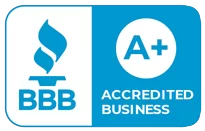What You Should Know About Tile Roof Underlayment If You Live in AZ
The temperatures in Arizona go well beyond 100° F during the summer. You need a sturdy roof to keep out the sun and help maintain a comfortable indoor environment.
Your roof is directly exposed to the sun’s heat, and it keeps you safe from the solar radiation. However, if the roof is made from low-quality materials, it won’t withstand the heat for long. It will deteriorate and suffer damage in the long run.
A reliable tile roof can withstand the high temperature for decades and at the same time, there is often a misunderstanding about life expectancy of tile roofs. Most people forget that tiles last longer than the underlayment, so although your tiles may have many more years of life, the underlayment may need to be replaced to provide proper protection from the elements.
The best roof is one which has quality materials, especially the underlayment. Keep reading to learn more about tile roof underlayment, what it is, and why you should use it for your roof.
What Is Tile Roof Underlayment
Tile roof underlayment is a membrane applied directly to the tile roof deck. You can place it under all other roofing materials. It acts as an extra layer protecting the roof from severe weather.
Underlayment is indispensable in the construction of tile roofing for the following reasons:
- It acts as a non-slip walking surface to protect roof installers from falling.
- It protects your roof from moisture, especially if the rains come before the roof gets fully installed.
- Underlayment acts as a water barrier whenever your roof gets damaged in a storm
- It adds a layer of protection from sound and heat
- It prevents leaching of chemicals from asphalt shingles onto your roof deck
Roofing underlayment has three categories: rubberized asphalt, synthetic underlayment (non-bitumen), and asphalt-saturated felt. Below is a breakdown of the three types:
Asphalt-Saturated Felt
It has a high concentration of asphalt that gives it the water-resistant properties. It was common in the past when synthetic products began gaining popularity. Asphalt-saturated felt is a product of bitumen, asphalt, polyester and natural plant fibers.
You can apply it across the whole roof deck. However, to protect the roof from water damage, you should opt for a waterproof underlayment.
Rubberized Asphalt
Rubberized asphalt is waterproof because of the high percentage of asphalt and rubber polymer it contains. Thus, it is more expensive than all the other types of roofing underlayment.
If you remove the sticky back with a protective membrane before installation, it creates a waterproof seal between the underpayment and the roof deck. This means rubberized asphalt is a great material to use in severe winter regions to protect the edge of the roof deck from damage.
But if you live in the high-temperature areas like Arizona, go for rubberized asphalt formulated for use in high-temperature situations. Some are designed to resist the heat of up to 250°F without degradation the adhesives.
Synthetic Underlayment
Synthetic underlayment is water-resistant because its basemat has a high asphalt saturation. It also has a superior heat resistance and stability thanks to the fiberglass addition.
Some synthetic underlayment manufacturers go a step further and add scrim reinforcement to provide high slip resistance. This underlayment is useful across the entire roof deck.
Most roofing professional prefer synthetic underlayment because:
- The material is thinner and lighter than most underlayments; thus, it is not heavy on the roof.
- It is less slippery, so one is unlikely to fall during installation or repairs.
- Synthetic underlayment is easy to install.
- It degrades more slowly and lasts longer than most materials.
- The material tolerates high heat, a reason why you should embrace it in Arizona.
Tile Roof Underlayment for Arizona Homes
If you live in Arizona, you know how hot it gets, especially in summer. With that in mind, you need underlayment made of materials that can resist higher temperature without getting damaged.
You can choose from asphalt, foam, modified bitumen, polymer, or PVC because of their durability and heat resistance.
- Asphalt is known for its durability, long life expectancy, excellent uplift, and fire resistance.
- Polymer is water resistant, fire resistant, and protects the roof from rain, heat, and fire.
- Foam is known for its insulation properties.
- Modified bitumen has a light color that reflects solar heat; thus, the right choice in the hot Arizona climate.
- PVC has great fire resistance properties and can withstand intense heat.
All these types of underlayment are excellent choices. Consider your roofing needs and budget when settling for the best one for your roof.
When to Replace Your Tile Roof Underlayment
The most common underlayment, felt, has a lifespan of about 12 to 20 years. After this, it begins to deteriorate. However, some factors other than lifespan can lead to deterioration of your underlayment, and these are:
- Low-grade underlayment
- Poor installation
- The absence of hip and ridge closer
- Undersized channel metals
- Lack of maintenance
A worn underlayment can lead to roof leaks and water damage. Instead of waiting for your roof to start leaking, hire a roofing specialist to replace old underlayment.
Choosing the Best Roofing Contractor
Once you find the best underlayment materials for your project, it’s time to look for a qualified, licensed roofer to install the underlayment. A reliable contractor knows the weather requirements in Arizona. They will pick the best underlayment for your roofing and install it with accuracy and expertise
Here are the three steps to choosing a roofing contractor.
1. Check the Must-Have Requirements
Thee must-haves are what you expect of every genuine contractor. They include:
- Insurance
- Licensing(if you are in Arizona, confirm the number with Arizona Registrar of Contractors)
- High ratings from customers that have worked with the company
- Business license, tax ID number, permanent place of business, and telephone number
2. Ask the Right Questions
You need to ask about how you will make payments, whether there’s a list of the customers they have work with. Talk to the customers and ask about the quality of service they received.
Also, ask the company whether there is an installation guarantee or warranty. Inquire about the length of the project as well to determine how long you have to wait to have a complete roof.
3. Assess for multiple written estimates
Don’t always settle for the first contractor. Evaluate a few and ask for written quotes indicating the estimated project costs.
Once you get the estimates, analyze them and hire the contractor who will give you the best services at affordable costs.
Do You Need New Roof Underlayment?
The roof is your first defense against inclement weather. Install quality tile roof underlayment to enjoy a high-quality, sturdy, and durable roofing structure.
Do you need underlayment for your roof? We are a licensed, bonded, and insured roofing company based in Arizona. Contact us today for a free quote plus professional roofing services.
As a top tile roof repair company in Mesa, we are the experts in tile roof repairs and replacements. Contact us online or call our office directly at (602) 283-3383 to have your roof inspected or to schedule an appointment.





